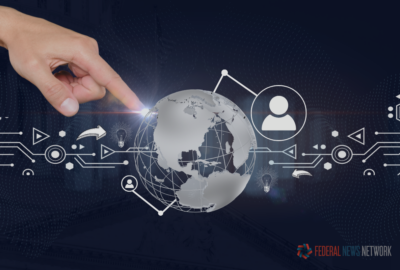‘Still work to be done’ on security clearance reform efforts
The first Trump administration started "Trusted Workforce 2.0." After years of progress and some major challenges, where does security clearance reform go next?
The Trump administration promises to be radically different from its predecessor, but security clearance reform is one area of likely continuity.
In his first few days in office, President Donald Trump has already made headlines for revoking the security clearances of former senior intelligence officials. He also directed a process for immediately granting White House staff top-secret clearances for up to six months.
But in the coming days and weeks, agency hiring managers and industry will be keenly watching how new leaders plan to carry forward a whole-of-government clearance reform effort started under the first Trump administration.
The “Trusted Workforce 2.0” initiative kicked off in 2018. The initial phase involved in digging out of a massive background investigations backlog that was slowing down hiring at agencies and contractors. Officials also began introducing “continuous vetting,” a system of automated records checks, to replace periodic reinvestigations.
The Biden administration carried the initiative forward by establishing new personnel vetting policies and expanding continuous vetting across the entire cleared workforce.
Now, with Trump re-entering the White House, the Intelligence and National Security Alliance is urging him to keep the ball rolling on vetting reform.
“There’s so much work that’s been done, really good work in the security reform area,” John Doyon, INSA’s executive vice president, said on Inside the IC. “But there’s still so much left to do.”
As part of a transition white paper, INSA’s recommendations include the new administration working with Congress and industry to “maintain progress while identifying more opportunities to streamline systems and create additional efficiencies” in the security process.
The recommendation is a recognition that despite the progress in recent years, the security clearance process is still a major hurdle to recruiting talent.
“No one wins if it takes nine months to clear someone or a year to clear someone to have a job, whether they’re being hired on the industry side or on the government side,” Doyon said. “There’s a mission to be done. There are individuals who have the talent and have the skills that are needed to get the mission done, but there’s this pause while you wait for the security process to be completed.”
The outgoing Biden administration earlier this month published a “Trusted Workforce 2.0 Transition Report” detailing both the successes and challenges of the last four years. It was written by the Security, Suitability and Credentialing Performance Accountability Council, a committee of senior U.S. officials who oversee personnel vetting policy.
The accomplishments in the report include finalizing core policies for Trusted Workforce 2.0. That includes new “Federal Personnel Vetting Guidelines,” which consolidated investigations into three “risk tiers.
Biden officials also unveiled ambitious new targets for how long it should take to onboard cleared employees.
Agencies also finalized a new Personnel Vetting Questionnaire (PVQ) that consolidates and updates several old forms, including the Standard Form-86, that security clearance applicants must fill out.
And agencies ramped up the adoption of continuous vetting over the last four years. The Defense Department completed the transition of approximately 4 million employees and contractors to continuous vetting in late 2021.
Agencies are now aiming to complete the enrollment of “public trust” positions into continuous vetting by the end of fiscal 2025.
The Biden administration also sought to de-stigmatize mental health issues and treatments in the clearance process. And the Office of the Director of National Intelligence issued new guidance that sought to relax restrictions around prior marijuana use for clearance applicants.
But the transition report acknowledges several “setbacks and challenges” that occurred during the Biden administration. They include delays with the software system that’s needed to streamline processes and replace legacy background investigation systems.
Late last year, the Defense Counterintelligence and Security Agency began work on a revised plan to get the program back on track.
Meanwhile, the average timeline to complete a security clearance investigation has increased over the last two years. DCSA, which is responsible for 95% of background checks across government, recently launched a “tiger team” to find solutions to the slower processing timelines.
The transition plan identifies several “next steps” for Trusted Workforce 2.0, including the continued expansion of continuous vetting, the deployment of shared services, and the use of new tools, like preliminary determinations and “eAdjudication,” to speed up onboarding.
Doyon said he hopes the new Trump administration will be ambitious in continuing efforts to reform the personnel security process.
“I admire my colleagues in DCSA who are tackling this issue. It is hard,” Doyon said. “[DCSA Director] David Cattler has come in recently. I think he’s doing a good job to get his arms around the totality of the challenges and reset the organization. There are resources needed, there are policies needed. There’s leadership from the top to support this activity. There’s also a lot of support on the Hill for getting this right. But having a vision that we’re not just going to Trusted Workforce 2.0, but this is on our path of a longer arc continuous improvement and streamlining, making it more efficient. This process is important.”
Copyright © 2025 Federal News Network. All rights reserved. This website is not intended for users located within the European Economic Area.
Follow @jdoubledayWFED





